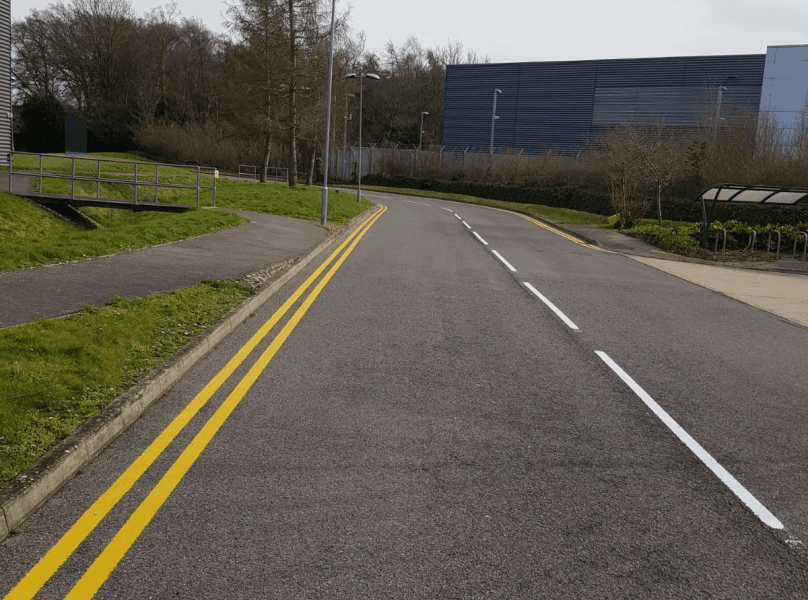In this blog post, we take a closer look at road markings, and in particular, thermoplastic road markings to find out why they are such a widely used method of marking roads, car parks, playgrounds, and warehouses.
What’s the purpose of road markings?
Road markings are often taken for granted, but, these strategically installed markings are a vital element of our transportation infrastructure, and serve multiple purposes, which include:
Safety: Road markings provide essential visual guidance to drivers, delineating lanes, and warning of hazards and junctions etc.
Efficiency: Properly marked roads help maintain smooth traffic flow, which helps to reduce congestion and improve overall traffic flow.
Regulation: Road markings communicate rules and regulations to drivers, such as speed limits, no-overtaking areas, and pedestrian crossings.
Thermoplastic Road Markings
Although there are various methods of marking roads, one of the most popular methods of marking is thermoplastic, which rather than being a traditional paint, is a form of heat-applied plastic. The main reasons thermoplastic road markings have become such a popular choice are due to benefits including:
Durability
Thermoplastic road markings are highly durable and can withstand the extreme wear and tear of heavy traffic on the busiest of roads, no matter what the traffic levels are, or the weather conditions. This hardwearing longevity of thermoplastic road markings has various benefits, but the key benefit is that the need for frequent reapplication is removed, which saves time, and more importantly, resources and costs.
Visibility
One of the main reasons for installing road markings, on roads and car parks, is to ensure visibility, especially during low-light conditions, or adverse weather conditions such as heavy rain, snow, fog or mist. Due to the addition of harmless glass beads, thermoplastic offers exceptional visibility to road users, allowing them to quickly determine and follow lane markings, which in turn, helps to ensure the safety of all road users.
Quick application
Thermoplastic road markings are heat-applied, which means the material is heated until it becomes a liquid, then applied to the road surface where it rapidly cools and hardens to a usable condition. This quick application process of thermoplastic road markings has numerous benefits, such as general time-saving, and improving efficiency in road projects, because it means there’s less disruption to traffic.
Environmentally Friendly
Thermoplastic road markings are considered more environmentally friendly than many of the alternative road marking applications, as they are free from harmful solvents and produce fewer volatile organic compounds or VOCs.
These environmental benefits of thermoplastic road markings not only help to preserve the immediate environment and the surrounding ecosystem, but they’re also safer to use for contractors, especially on drawn-out projects.
Looking for a line marking contractor?
City Road Markings is one of the UK's leading line marking experts, specialising in the installation of thermoplastic line markings for roads, car parks, warehouses, and playgrounds.
